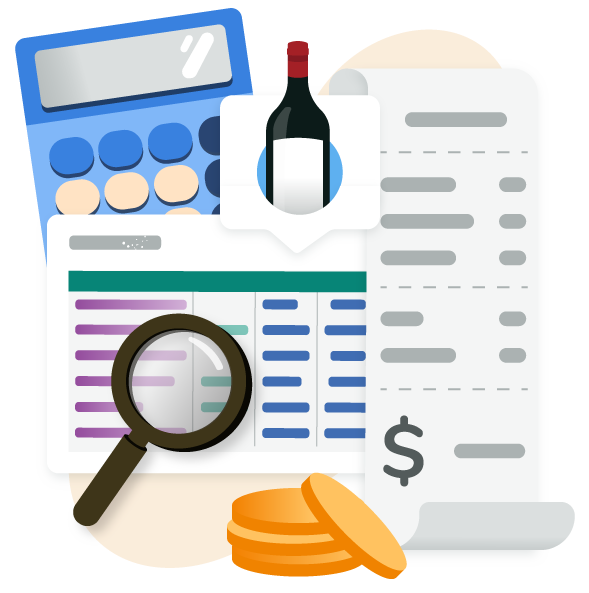What is a restaurant Chart of Accounts?
The Chart of Accounts (CoA) is a vital document that showcases several metrics of expenses, revenue, and other financial transactions that a restaurant incurs. Typically it has at least 7 categories including assets, liabilities, equity, revenue, COGS, expenses, and "other" categories. This important document is often used as a quick view into the restaurant’s finances as well as helping to inform other financial statements, like balance sheets, profit and loss (P&L) statements, and cash flow statements.
Each one of these categories is associated with a four-digit number. Keep in mind that for our example we’ve followed best accounting practices for numbering the categories below. Assets are in the 1000s, liabilities in the 2000s, equity in the 3000s, and so on.

Why you need to keep a CoA
While the main reason the Chart of Accounts is so important is because it provides the structure a bar or restaurant owner needs to keep track of finances to ensure their business is financially healthy, there are several other important reasons:
- Streamline your record-keeping process
By categorizing all of your business's transactions into important categories in one document, it’s way easier to track important metrics like expenses, revenue, and overall financial performance. This document will also ensure your financial records are up-to-date and accurate, which is essential for situations like tax time, during financial audits, and to assist other financial reporting.
- Strengthen your financial operations
With a chart of accounts, investigating the overall financial health and performance of your restaurant will seem more manageable. You'll be able to identify areas of strengths and weaknesses will become easier. Is one expense category blowing your allotted budget? Your CoA will allow you to make more informed decisions to help rectify this issue, such as adjusting menu prices, reducing waste, or improving marketing efforts.
- Budget and plan better
Use the CoA to help inform your budgeting choices and process by breaking down all of your different expenses into categories, such as inventory, marketing, wages, and so on. This will tell you where the majority of your money is being spent, allowing for more accurate budgeting and forecasting.
What should be included in your CoA
Assets
Current and fixed assets and their value like:
- Cash-on-hand & bank balances: cash in safe, cash drawers, and money in your bank account
- On-hand inventory: all food and beverages in your inventory
- Kitchen equipment: any equipment you own like fridges, freezers, and ovens
- Front-of-house furniture: tables, chairs, artwork, lighting, and so on
- Printers: receipts and docket printers
- Computers, phones, and tablets: here you can include your POS system, any office computers, and kitchen displays
Liabilities
Any money your restaurant owes like:
- Credit card debt: any outstanding balances on credit cards
- Loan repayments: for example, loans for kitchen equipment
- Overdue taxes: any business-related taxes that are outstanding
- Unpaid invoices: balance of any unpaid invoices
Equity
Outline any ownership interest that’s associated with your restaurant like:
- Land: the value of any land owned
- Property: the value of any property owned
- Stocks: the value of any stocks owned by shareholders
Income
Revenue generated and all sources of income like:
- In-house dining: revenue from your in-house dining
- Wholesales and B2B: any sales to other businesses
- Takeaway and delivery: income from in-house delivery and third-party services
- Catering and events: catering service revenue
- Merchandise: merchandise sales revenue
Expenses
Expenses that your restaurant incurs and any money you spend:
- Rent and utilities: water, gas, and electricity
- Wages and superannuation: sum of employee wages
- Marketing and advertising: printing costs for flyers, paid advertising, and other marketing material
- COGS: total cost of goods sold
- Software subscription fees: POS subscription fees, accounting software, and online delivery apps
- Insurance: any and all insurance
- Licenses and certificates: liquor, music, and so on
- Purchasing new equipment and supplies: cleaning supplies, new glassware, and new furniture
